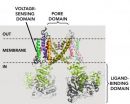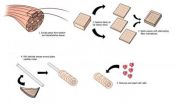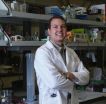(Press-News.org) Australian scientists have shown in the laboratory how a 'transcription factor' causes breast cancer cells to develop an aggressive subtype that lacks sensitivity to estrogen and does not respond to known anti-estrogen therapies. The research, which has significant implications for breast cancer treatment, is published December 27 in the open access journal PLOS Biology.
Transcription factors are molecules that switch genes on or off. In this case, the transcription factor known as 'ELF5' inhibits sensitivity to estrogen very early in the life of a breast cancer cell. In 2008, Professor Chris Ormandy from the Garvan Institute of Medical Research in Sydney, Australia, showed that ELF5 was responsible for the development of breast progenitor cells into the estrogen-receptor-negative cells that produce milk in the breast during pregnancy.
In the current study, a team led by Ormandy in collaboration with Drs Maria Kalyga and David Gallego-Ortega, has shown that the same molecular decision occurs in breast cancer and that ELF5 has the ability to change an existing tumour into an estrogen-insensitive tumour.
"This work tells us that cancers which become refractory to anti-estrogen treatment often do so by elevating their levels of ELF5 and becoming functionally estrogen receptor negative," said Ormandy.
The team has also described the genetic mechanisms by which ELF5 opposes the action of estrogen, and has shown that it is possible to alter the subtype of breast cancer by manipulating ELF5 levels in cancer cells in the laboratory.
"This raises the therapeutic option of manipulating ELF5 levels to treat breast cancer. As ELF5 is intracellular, this could possibly be done with small molecule therapies that penetrate cells and target protein-to-protein interactions, or with small inhibitory RNAs. There is also the possibility of testing ELF5 levels in tumours to predict response to treatment and therefore guide treatment decisions."
"Our key discovery here is that by simply manipulating one transcription factor we can change the subtype of breast cancer."
###Funding: This work was funded by The National Health and Medical Research Council of Australia, New South Wales Cancer Council, Cancer Institute New South Wales, Banque Nationale de Paris-Paribas Australia and New Zealand, RT Hall Trust, Australian Cancer Research Foundation, Prostate Cancer Foundation Australia, Cure Cancer Foundation Australia, Breast Cancer Campaign UK, and the National Breast Cancer Foundation. The funders had no role in study design, data collection and analysis, decision to publish, or preparation of the manuscript.
Competing interests: The authors have declared that no competing interests exist.
Citation: Kalyuga M, Gallego-Ortega D, Lee HJ, Roden DL, Cowley MJ, et al. (2012) ELF5 Suppresses Estrogen Sensitivity and Underpins the Acquisition of Antiestrogen Resistance in Luminal Breast Cancer. PLoS Biol 10(12): e1001461. doi:10.1371/journal.pbio.1001461
CONTACT:
Christopher Ormandy
Garvan Institute
Sydney, AUSTRALIA
c.ormandy@garvan.org.au
The factor that could influence future breast cancer treatment
2012-12-28
ELSE PRESS RELEASES FROM THIS DATE:
Statin drug shows promise for fighting malaria effects
2012-12-28
(SALT LAKE CITY–Researchers have discovered that adding lovastatin, a widely used cholesterol-lowering drug, to traditional antimalarial treatment decreases neuroinflammation and protects against cognitive impairment in a mouse model of cerebral malaria. Although there are differences between mouse models of cerebral malaria and human disease, these new findings indicate that statins are worthy of consideration in clinical trials of cerebral malaria, according to an article published in the Dec. 27 issue of PLOS Pathogens.
Malaria, a parasitic infection that is transmitted ...
Staphylococcus aureus: Why it just gets up your nose!
2012-12-28
A collaboration between researchers at the School of Biochemistry and Immunology and the Department of Microbiology at Trinity College Dublin has identified a mechanism by which the bacterium Staphylococcus aureus (S. aureus) colonizes our nasal passages. The study, published today in the Open Access journal PLOS Pathogens, shows for the first time that a protein located on the bacterial surface called clumping factor B (ClfB) has high affinity for the skin protein loricrin.
S. aureus is a major human pathogen, with the potential to cause severe invasive diseases. It ...
The first genome sequence of Chinese plum provides important resource for fruit improvement
2012-12-28
December 27, 2012, Shenzhen, China - A Chinese research team, led by Beijing Forestry University, BGI, Beijing Lin Fu Ke Yuan Flowers Co., Ltd, and other institutes, has completed the first genomic sequence of Prunus mume, known as mei. This work is extremely important for the deeper understanding of Rosaceae evolution and provides an invaluable resource for the improvement of fruit trees. The latest study was published online today in Nature Communication.
As one of the longest-lived flowering fruit trees, the P. mume was domesticated in China more than 3,000 years ago. ...
Students' online and offline social networks can predict course grades -- Ben-Gurion U. researchers
2012-12-28
BEER-SHEVA, Israel, December 27, 2012 -- Ben-Gurion University of the Negev's (BGU) Social Networks Security Research Group in its Department of Information Systems Engineering has developed a novel method to predict how well or badly a student will perform in an academic course.
The information can be used to determine which students need the most help, as well as which ones excel and might be guided to further study or careers in that subject area. The paper, "Predicting Student Exam Scores by Analyzing Social Network Data," was presented earlier this month at the Advanced ...
A model-free way to characterize polymodal ion channel gating
2012-12-28
Two studies in The Journal of General Physiology (JGP) help pave the way for a "shortcut" model-free approach to studying activation of "polymodal" ion channels—channels that open in response to multiple stimuli. Transmembrane ion channels respond to various physiological stimuli to regulate numerous cellular functions. Different classes of channels respond to different types of stimuli; some channels, for instance, respond to changes in membrane potential whereas others are activated by ligand binding. Polymodal channels integrate different cellular signals, enabling them ...
Slice, stack, and roll: A new way to build collagen scaffolds
2012-12-28
MEDFORD/SOMERVILLE, Mass. (December, 26 2012) – Tufts University School of Engineering researchers have developed a novel method for fabricating collagen structures that maintains the collagen's natural strength and fiber structure, making it useful for a number of biomedical applications.
Collagen, the most abundant protein in the body, is widely used to build scaffolds for tissue engineering because it is biocompatible and biodegradable. Collagen is, however, hard to work with in its natural form because it is largely insoluble in water, and common processing techniques ...
GSA Bulletin celebrates GSA's 125th Anniversary with new geologic time scale
2012-12-28
Boulder, Colo., USA – GSA BULLETIN articles posted online between 10 Dec. and 21 Dec. 2012 include a new version of The Geological Society of America's Geologic Time Scale. This paper marks the beginning of a special series of invited papers in celebration of GSA's 125th Anniversary in 2013. Highlights are provided below.
1. A new/revised GSA geologic time scale.
2. Complex mammal fossil record of the Gran Barranca, Patagonia, Argentina.
3. A new and simple method for estimating the rate of sediment delivery to ancient basins.
4. A study of the provenance of volcanic ...
Monkey see, monkey do: Visual feedback is necessary for imitating facial expressions
2012-12-28
Research using new technology shows that our ability to imitate facial expressions depends on learning that occurs through visual feedback.
Studies of the chameleon effect confirm what salespeople, tricksters, and Lotharios have long known: Imitating another person's postures and expressions is an important social lubricant.
But how do we learn to imitate with any accuracy when we can't see our own facial expressions and we can't feel the facial expressions of others?
Richard Cook of City University London, Alan Johnston of University College London, and Cecilia Heyes ...
Strange behavior: New study exposes living cells to synthetic protein
2012-12-28
One approach to understanding components in living organisms is to attempt to create them artificially, using principles of chemistry, engineering and genetics. A suite of powerful techniques—collectively referred to as synthetic biology—have been used to produce self-replicating molecules, artificial pathways in living systems and organisms bearing synthetic genomes.
In a new twist, John Chaput, a researcher at Arizona State University's Biodesign Institute and colleagues at the Department of Pharmacology, Midwestern University, Glendale, AZ have fabricated an artificial ...
Penn team developing new class of malaria drugs using essential calcium enzyme
2012-12-28
PHILADELPHIA - Calpain, a calcium-regulated enzyme, is essential to a host of cellular processes, but can cause severe problems in its overactivated state. It has been implicated as a factor in muscular dystrophy, AIDS, Alzheimer's disease, multiple sclerosis, and cancer. As such, finding and exploiting calpain inhibitors is an important area of research.
A team from the Perelman School of Medicine, University of Pennsylvania, in collaboration with the University of California at San Francisco and the Department of Biochemistry and Protein Function Discovery at Queen's ...



